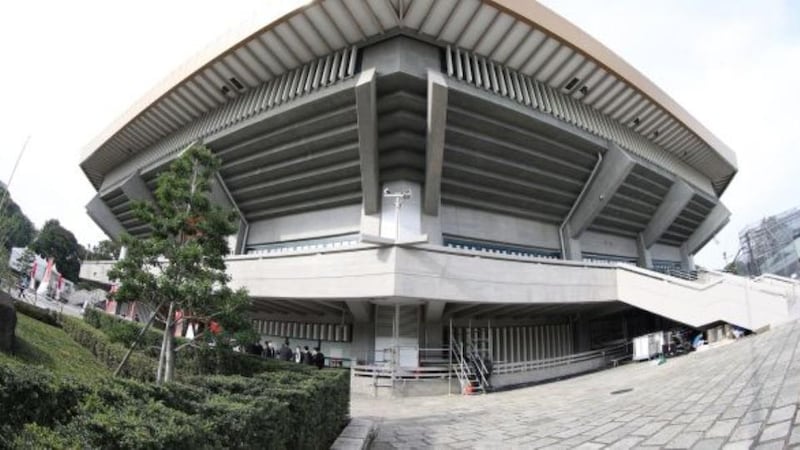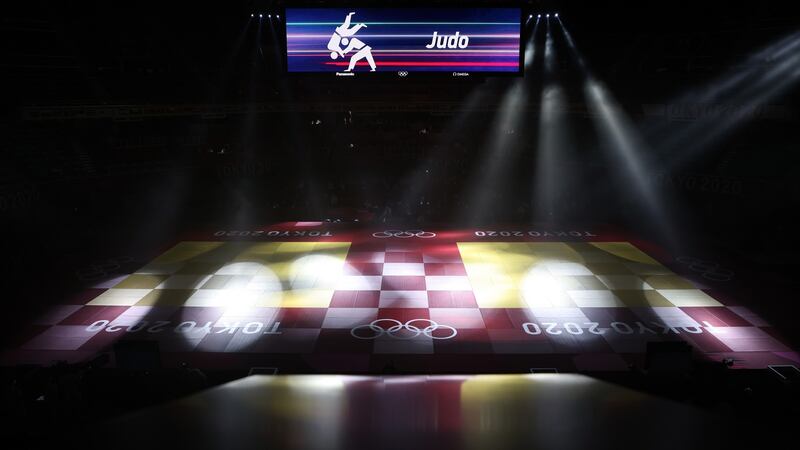To carry us from our hotel to the main press centre there is a bus, which stops and starts from two blocks around the corner, that takes about 35 minutes. From there, we are carried on another bus, which takes about nine minutes, and then we stand – not so patiently – in line for any which bus we choose to take us to the Olympic venues.
How many are there? I don't know. After midday on Tuesday I take a bus to the Budokan, the venue for the men's and women's judo competitions, and it stops four or five blocks around the corner from the venue, around which all the streets are closed to the public, so I walk the rest of the way, which suits me fine.
It's here I press play on Bob Dylan at Budokan, which I had already downloaded to Spotify, that some say is Dylan's best live album. It was recorded at this very venue over two live shows, on February 28th and March 1st, 1978, and first released on April 23rd, 1979. Back then it was only his third live album, after Before the Flood, in 1974, and Hard Rain, in 1976, and he's had a few more since.


From the first track it’s distinctly unique, Dylan slows down the rhythm and delivery of the lyrics – Elvis style – against the backdrop of his magnificent nine-piece band, heavy on the flute and violin and percussion, and the tempo which is positively reggae. It’s 100 minutes of pure bliss.
"And but for the sky there are no fences facin'
And if you hear vague traces of skippin' reels of rhyme
To your tambourine in time, it's just a ragged clown behind
I wouldn't pay it any mind
It's just a shadow you're seein' that he's chasing"
Typhoon
That's from the first track, and the second track is Shelter From the Storm. The forecast was for a typhoon in Tokyo on Tuesday, only it turned to be a stinging wind, the Budokan a shelter from the still damn hot sun instead.
“I was burned out from exhaustion, buried in the hail
Poisoned in the bushes an’ blown out on the trail
Hunted like a crocodile, ravaged in the corn
‘Come in,’ she said, ‘I’ll give you shelter from the storm’”
The first thing that hits you when you walk inside the Budokan is the smell, that aged oak wooden scent, sweetly incense-infused and not entirely stale. If these walls could talk they would never shut up.
It's the men's and women's judo heavyweight elimination rounds, this is where Japan's Takanori Nagase beats Italy's Christian Parlati by a considerable margin – 10-0 – which might well have raised the old wooden roof, if any of the Tokyo locals had been in attendance.

The Budokan – known around here as the Nippon Budokan – has a capacity of 14,471, spread across the ground floor and two surrounding floors, the second of which is the main seated section, which seats more than 7,000 people. It's 43 metres in height, was built specifically for the judo competitions at the 1964 Olympics in Tokyo, and was designed by Japanese architect Mamoru Yamada. It cost 2 billion Japanese yen at the time, about $5 million, which was a lot of money back then. It was well worth it, I reckon.
Sacred
I take an empty seat left of the centre stage of play. This hall is already sacred on so many levels, near the Imperial Palace and Yasukuni Shrine, Budokan translating into English as martial arts hall. It is well-known in modern times as the main venue for Japanese professional wrestling.
In 1978 Dylan was following in some sacred footsteps too. The Beatles were the first ever musical act to play here, in a series of concerts held in June and July, 1966, and back then the slow hand clap wasn’t entirely in approval. There were some Japanese people who reckoned The Beatles should not play at the Budokan.
ABBA ended their last tour here, too, on March 27th, 1980, and there are lots of bootlegs of that show. There are also many others who released live albums of their shows from this venue (it has amazing acoustics) including: Bryan Adams, Eric Clapton, Cheap Trick, Duran Duran, Kiss, Ozzy Osbourne, Judas Priest, and Deep Purple. More recently Mariah Carey and Janet Jackson were among the last to play here, two sold-out shows in 2018 and 2019.
I never knew that Muhammad Ali fought here too, against Antonio Inoki, now Muhammad Hussain Inoki, the former Japanese wrestler turned politician, back in June of 1976. That was billed as the war of the worlds. I checked it out, and most of that fight saw Inoki on his back, kicking Ali's legs 107 times, uninhibited by the referee. The end result was a draw.
There is no time to lose, not with other Olympic venues to explore, so I walk outside and press play again.
“Well, I’m livin’ in a foreign country but I’m bound to cross the line
Beauty walks a razor’s edge, someday I’ll make it mine
If I could only turn back the clock to when God and her were born
‘Come in,’ she said, ‘I’ll give you shelter from the storm’ ”











